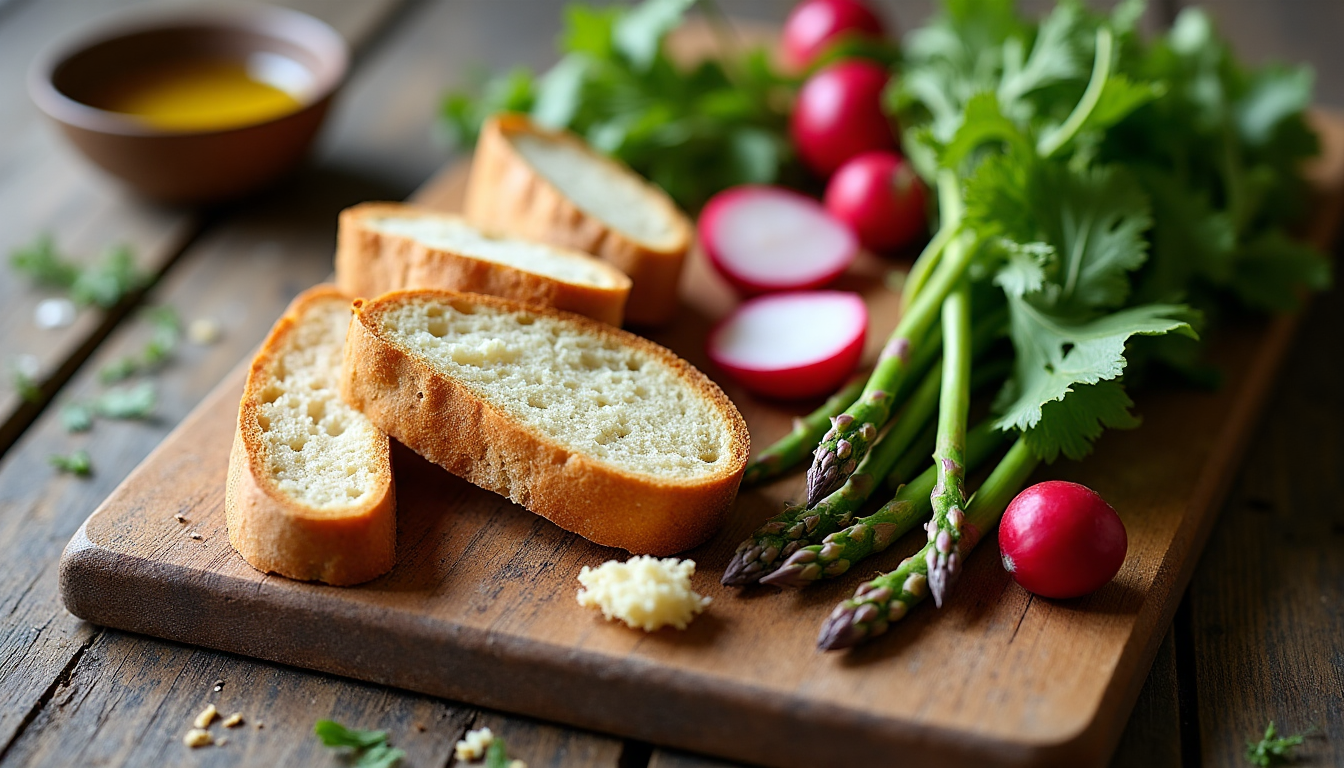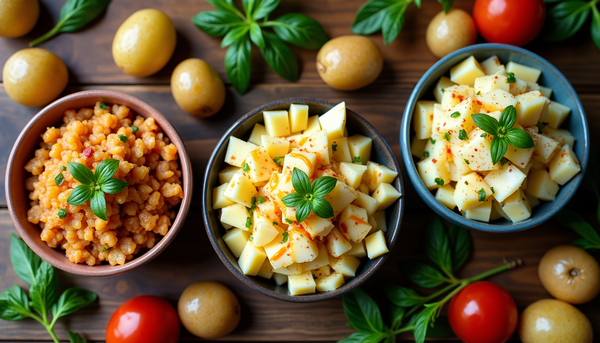Why I Make Panzanella When Life Falls Apart

Why I Make Panzanella When Life Falls Apart
The first time I made panzanella, I was crying into a bowl of stale sourdough.
It was one of those afternoons where everything felt wrong—work was suffocating, my relationship was crumbling, and I'd just realized I'd let a perfectly good loaf of bread turn into a brick on my counter. The guilt hit hard. My grandmother's voice echoed in my head about wasting food, about not appreciating what we have.
But then I remembered reading somewhere that Italians have this whole dish built around day-old bread. Panzanella. The word felt foreign on my tongue, but the concept? That felt like coming home.
The Audacity of Leftovers
Here's what nobody tells you about panzanella: it's punk rock disguised as peasant food.
Think about it. Someone looked at stale bread—the thing we're conditioned to throw away—and said, "What if this could be the star?" What if we stopped treating leftovers like failures and started seeing them as potential?
Growing up, my mom would make fried rice from yesterday's takeout containers. My dad turned wilted vegetables into magical soups. But somehow I'd absorbed this Western idea that meals needed to be perfect, Instagram-ready, built from pristine ingredients purchased with intention.
Panzanella flips that script entirely.
The Italians, bless them, understood something profound: transformation is more interesting than perfection. They took bread so hard you could break windows with it and created something that tastes like summer itself.
Bread as Metaphor (Because I Can't Help Myself)
I know, I know. You came here for a recipe, not a therapy session. But bear with me for a second.
When you tear that stale sourdough into irregular chunks—and the recipe specifically says to tear it, not cut it—you're participating in something ancient. You're saying that broken things can still be beautiful. That rough edges catch flavor better than smooth surfaces.
The bread soaks up the vinaigrette like it's been waiting its whole life for this moment. It softens but holds its shape. It becomes something entirely new while still being recognizably itself.
Tell me that's not a metaphor for everything we're all trying to figure out.
The Recipe (Finally)
Okay, let's talk about actually making this thing. Because trust me, once you taste it, you'll understand why I get so emotional about salad.
What You'll Need:
The Foundation:
- 1 small sourdough loaf, preferably day-old (if yours is fresh, just tear it up and let it sit out for a few hours—we're aiming for "rustic" here, not "breadcrumb")
- 3 tablespoons good olive oil, divided
- Sea salt and black pepper (the real stuff, not the pre-ground dust)
The Spring Symphony:
- 1 bunch asparagus, cut into 2-inch pieces (snap off those woody ends—they're not worth the struggle)
- 3 ounces baby arugula (peppery little leaves that bite back)
- 3 mini cucumbers, sliced however makes you happy
- 5 radishes, sliced paper-thin (mandoline if you have one, knife skills if you don't)
- 1 cup fresh herbs—basil, dill, mint, whatever's calling to you
- 1/2 cup crumbled feta (the good stuff in brine, not the pre-crumbled sadness)
The Magic:
- 1 batch lemony shallot vinaigrette (lemon juice, olive oil, minced shallot, garlic, Dijon mustard, salt, pepper—whisked together with conviction)
The Process:
Step 1: Heat and Prepare Preheat your oven to 400°F. Line a baking sheet with parchment because life's too short to scrub burnt bits off metal.
Step 2: Transform the Bread Tear that sourdough into bite-sized pieces. Don't overthink it—irregular is the goal. Toss with 2 tablespoons of olive oil until every piece glistens. Spread on your prepared baking sheet, season generously with salt and pepper, and slide into the oven for 10-12 minutes.
You'll know they're ready when they're golden and make that perfect crunch sound when you bite into one. (Quality control is essential here.)
Step 3: The Asparagus Moment While the croutons are crisping up, toss your asparagus pieces with the remaining tablespoon of oil. When the bread comes out, transfer those beautiful croutons to a large serving bowl and immediately add the asparagus to the hot baking sheet.
Seven to eight minutes is all they need—you want them crisp-tender, still bright green, still holding their dignity.
Step 4: The Assembly This is where it gets fun. Add the warm asparagus to the bowl with your croutons. Pile in the arugula, cucumbers, radishes, herbs, and feta. Drizzle everything with that lemony vinaigrette.
Now toss it all together like you mean it. Get your hands dirty. Let the bread soak up the dressing. Watch the arugula wilt slightly from the warm asparagus. See how the radishes add these perfect pops of pink.
Step 5: Eat Immediately This isn't a salad that waits around. Panzanella is meant to be eaten in that perfect moment when the flavors are mingling but the textures haven't surrendered completely.
Making It Yours (Because Rules Are Suggestions)
Here's where I get excited about the endless possibilities:
Feeling Extra? Add grilled shrimp or torn rotisserie chicken. Scatter some toasted pine nuts or pistachios for crunch.
Different Vibes? Swap the feta for creamy burrata or tangy goat cheese. Try a different vinaigrette—balsamic, red wine, or that everyday lemon dressing that makes everything better.
Seasonal Flexibility? This is spring's version, but panzanella evolves. Summer calls for tomatoes and peaches. Fall wants roasted squash and dried cranberries. Winter? Citrus segments and pomegranate seeds.
Dietary Needs? Use your favorite gluten-free bread for the croutons. The spirit remains the same.
Why This Matters (The Part Where I Get Sentimental Again)
My parents immigrated with nothing but ambition and a deep understanding that food is love made visible. They taught me that the best meals come from necessity, creativity, and a willingness to see potential where others see problems.
Panzanella embodies that perfectly. It's Italian by birth but universal in spirit. It takes the thing you almost threw away and makes it the centerpiece. It celebrates imperfection and calls it beautiful.
Every time I make this salad, I think about all the ways we transform ourselves when life goes stale. How we tear ourselves apart and rebuild differently. How we soak up new experiences and emerge changed but recognizable.
Plus, it tastes ridiculously good. Like, clean-the-bowl-with-your-finger good.
Your Turn
I want to hear from you. What's your version of panzanella? What dish do you turn to when you need to transform leftovers—or yourself? Drop a comment below and tell me about the recipes that saved you, the meals that became metaphors, the simple foods that taught you profound things.
And if you make this spring panzanella, tag me in your photos. I want to see your imperfect, beautiful, torn-bread creations. Because the best food stories are the ones we write together.
P.S. — If you're dealing with your own stale bread moments right now, literal or metaphorical, know that you're not alone. Sometimes the most beautiful transformations start with what feels like waste. Sometimes the best meals come from crying into mixing bowls. And sometimes, just sometimes, a really good salad can remind you that broken things can still be magnificent.




